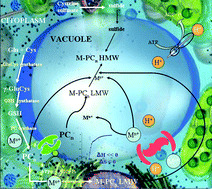From cysteine to longer chain thiols: thermodynamic analysis of cadmium binding by phytochelatins and their fragments†
Abstract

* Corresponding authors
a
Departament de Química Analítica, Facultat de Química Universitat de Barcelona, Martí i Franquès 1–11, E-08028 Barcelona, Spain
E-mail:
miquelestebanc@ub.edu
Fax: +34 93 402 12 33
Tel: +34 93 403 91 17

 Please wait while we load your content...
Something went wrong. Try again?
Please wait while we load your content...
Something went wrong. Try again?
 Fetching data from CrossRef.
Fetching data from CrossRef.
This may take some time to load.
Loading related content
